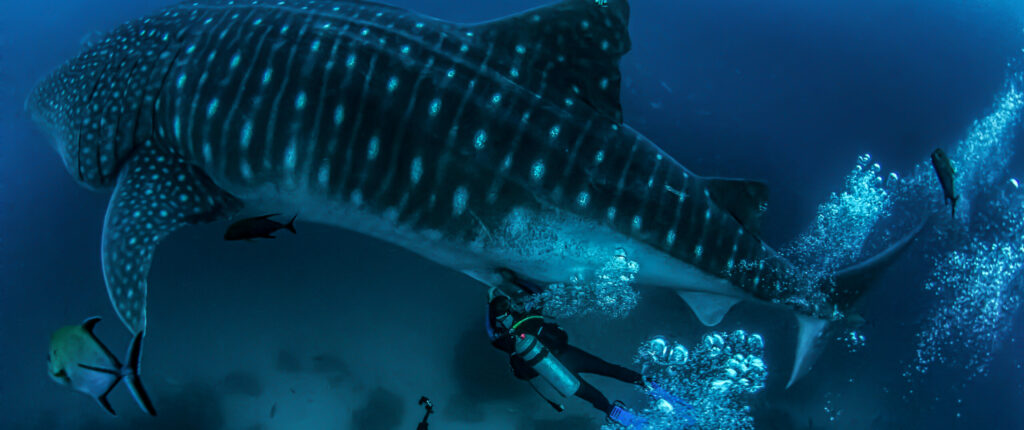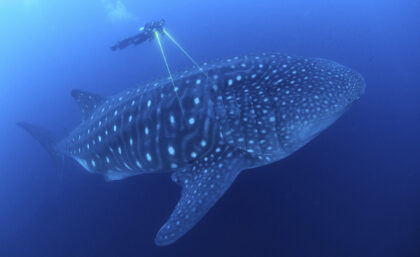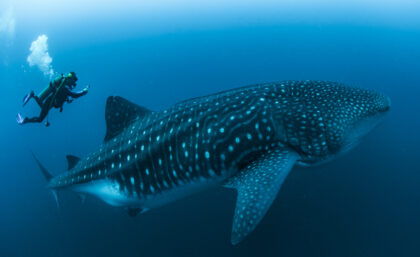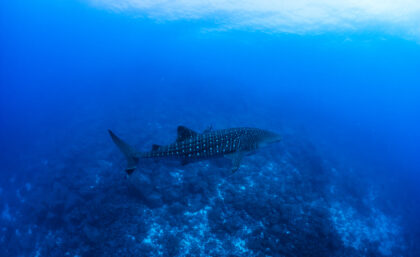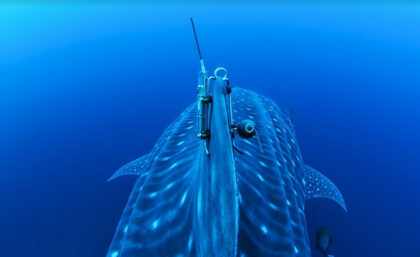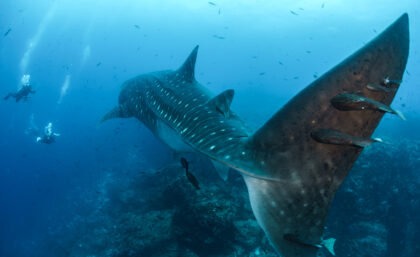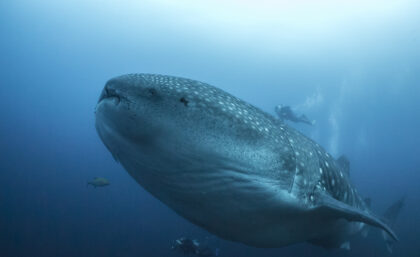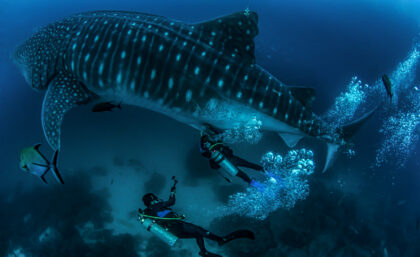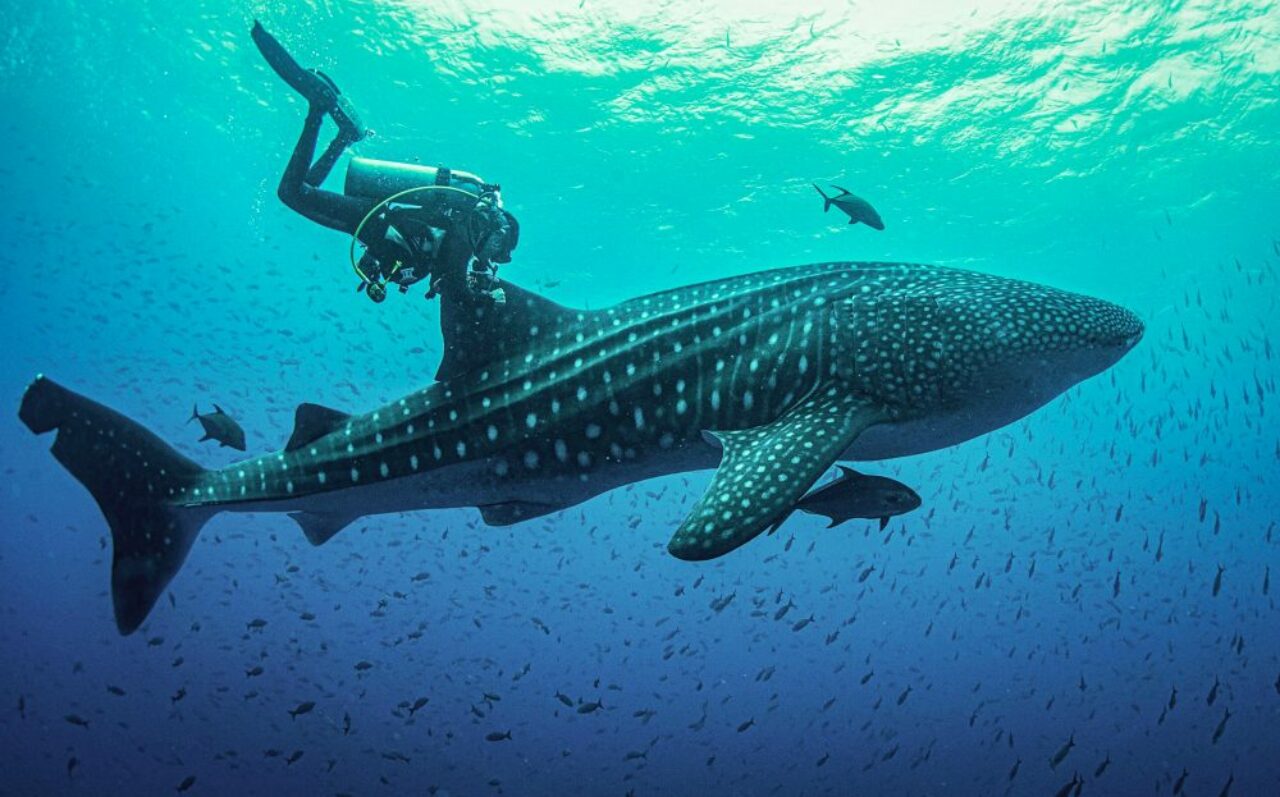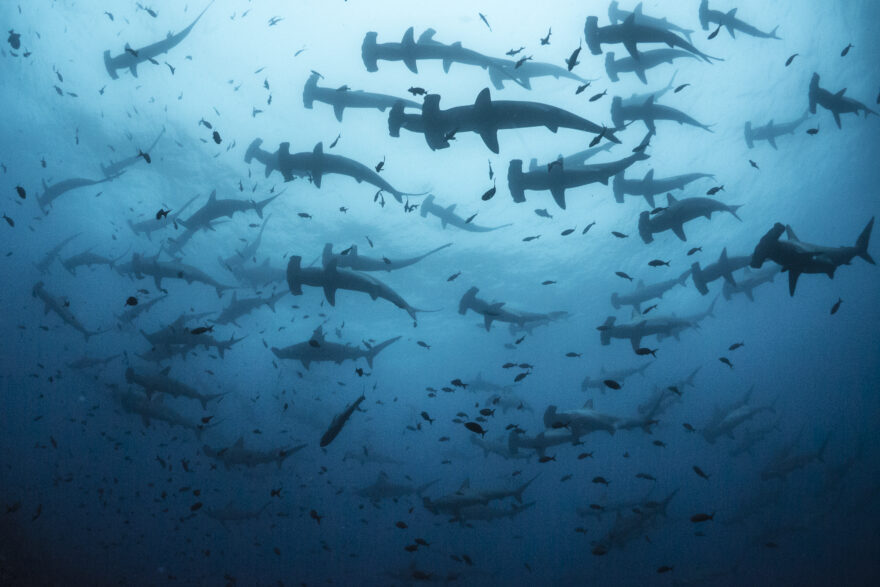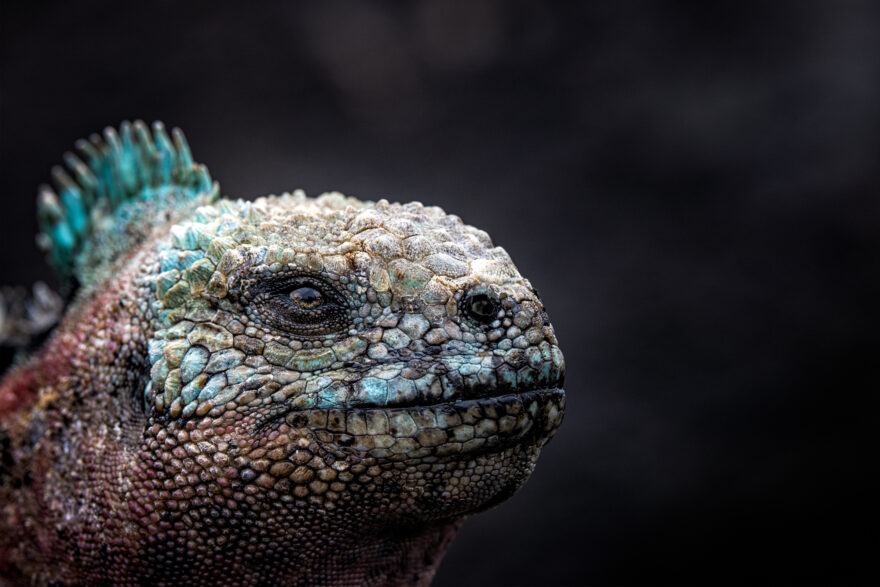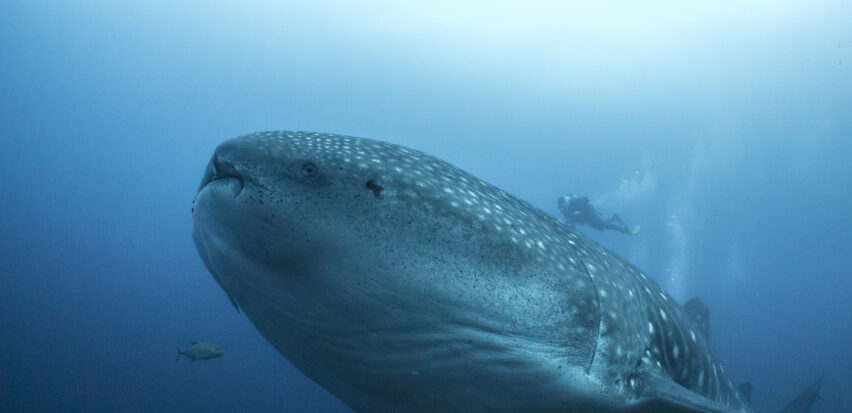
Overview
The whale shark is the world’s largest fish, reaching lengths of up to 20 metres, yet surprisingly little is known about it. We still do not fully understand their migratory movements and are yet to discover where they go to breed, give birth and spend the first few years of their life. These basic life history elements are not only interesting to know but also important if we are to successfully conserve this gentle giant, downgraded from Vulnerable to Endangered on the IUCN Red List in 2016. This ground-breaking research project in Galapagos, which GCT has supported since 2014, has already delivered crucial insights into their lives, providing evidence to support the creation of the new Hermandad Marine Reserve in 2022, and is key to building the case for greater protection of important marine migratory routes.
Lead Project Partners






Whale sharks in numbers
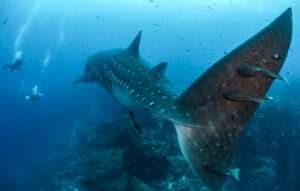
20 m
The length to which whale sharks can grow
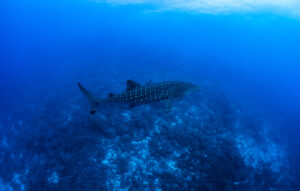
50 %
Estimated decrease in global population over the last 75 years
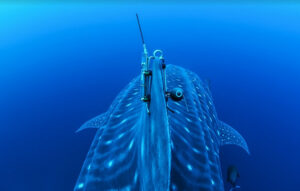
> 100
Over 100 whale sharks tagged in the Galapagos Marine Reserve
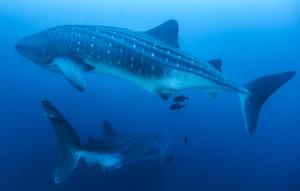
> 700
Each year over 700 whale sharks visit the Galapagos Marine Reserve
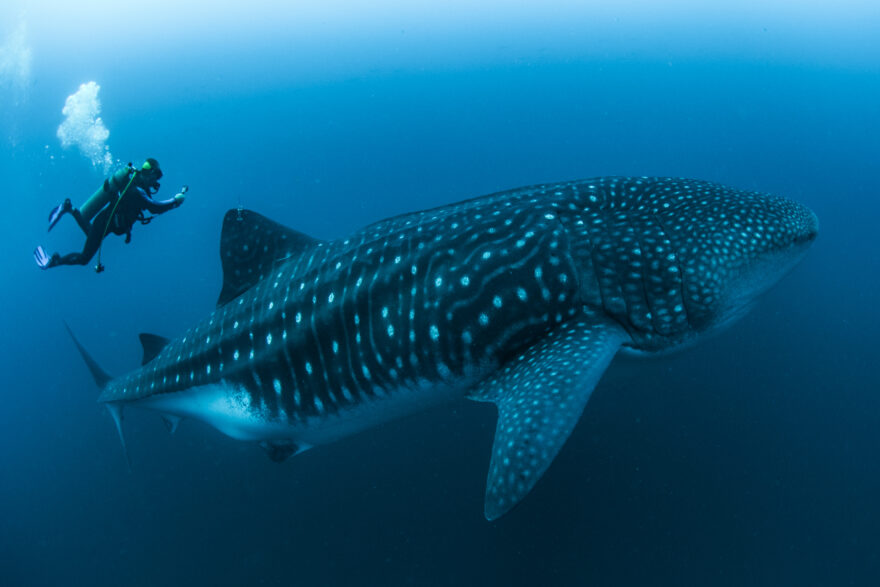
The problem
Whale sharks, like many shark species, are under threat. Although protected from international trade by CITES, their populations are declining, as they are subject to incidental bycatch by fishing vessels and are illegally targeted by others for their fins and oil. They are also susceptible to ocean plastic pollution and vessel strikes. The Galapagos Islands is one of several locations that whale sharks are known to visit in large volumes at certain times of the year. Unlike aggregations in the Indian Ocean, which are largely made up of small immature males, most whale sharks sighted in the Galapagos Marine Reserve (GMR) are large mature females. By tagging individual sharks, the team is hoping to build a robust set of data that will tell us about their migration behaviour. Once we understand more about migratory patterns, we can determine what action needs to be taken to protect this magnificent ocean giant and identify where new Marine Protected Areas could have the biggest impact, building the case for protecting at least 30% of Ecuadorian waters by 2030.

The data we collected is essential to inform policymakers for the creation of management practices that would help protect this Endangered species.
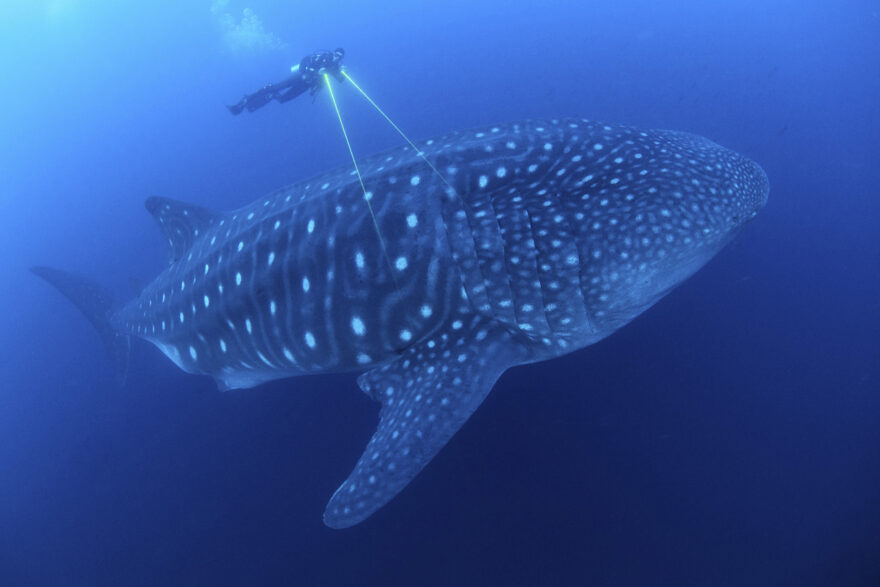
How we’re tackling it
Since the beginning of the project the team have tagged over 100 whale sharks, recording the position of the sharks each time they surface, allowing them to build a picture of their movements. For decades, the north of the Archipelago, and specifically Darwin and Wolf islands in the cold season between May and November, appeared to be the most important areas for whale sharks in the GMR.
New data, however, suggests another important aggregation site exists in the warm season from January to May around the central and southern areas of Galapagos. In March 2022 the team sent an expedition to investigate, using a repurposed fishing boat in collaboration with an ultra–light aircraft to spot and tag whale sharks in the area. Five more whale sharks were identified and tagged during this expedition.
A growing photo ID catalogue of whale sharks means we are now seeing an increasing number of re-sightings and have been able to prove the international connectivity of whale sharks, a key insight that contributed towards the creation of the new Hermandad Marine Reserve in 2022. The same whale shark which was seen at Socorro Island, Mexico was sighted, almost a year later, at Roca Blanca in Galapagos. Whale shark tags have also been picked up transmitting from fishing ports in mainland Ecuador, underlining the threat that the sharks face from fishing activity outside the protected areas. These ever-increasing data points enable us to understand more about their migratory behavior and their interactions with fishing fleets, in turn helping us to put the best protections in place.
In addition to understanding the sharks’ migration, the project team are also using blood sample data, including microplastic analysis, to investigate the sharks’ overall baseline health and reproductive state. They have collected blood samples and carried out the world’s first ultrasound on a wild whale shark. Both aspects of the sharks’ life history are important for educating local authorities and communities both in Galapagos and in mainland South America to inform management strategies.
Photo gallery
Click on an image to view larger
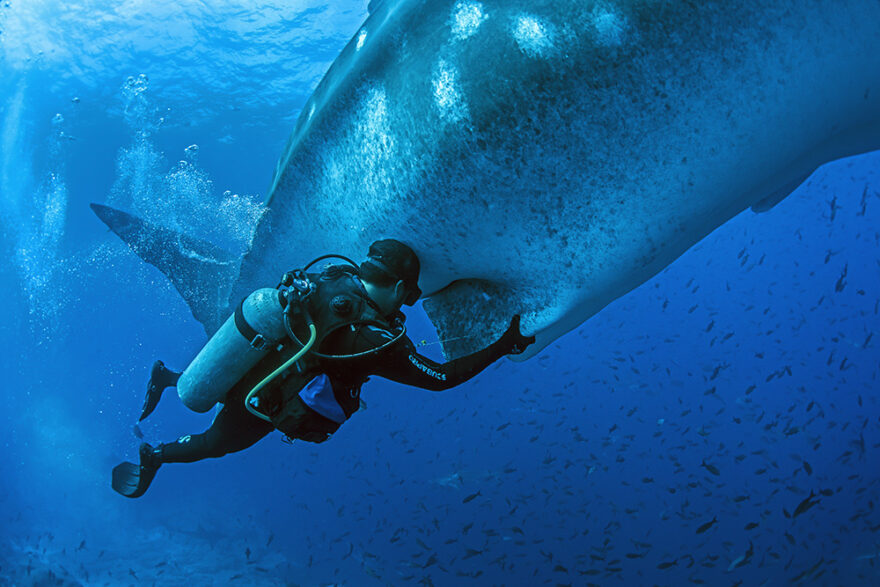
Project goals
The project aims to:
- track whale sharks in and around the Galapagos Marine Reserve
- reveal their migration patterns and behaviour
- investigate the impacts of fishing activity and pollution on whale sharks, both within the Marine Reserve and on the high seas
- inform future protections for whale sharks and other migratory marine species
This project was kindly supported by

Supporting institutions include Galapagos Conservancy, Save Our Seas Foundation, World Wildlife Fund, Galapagos Sharksky Travel and Conservation, Galapagos Shark Diving.
Project updates
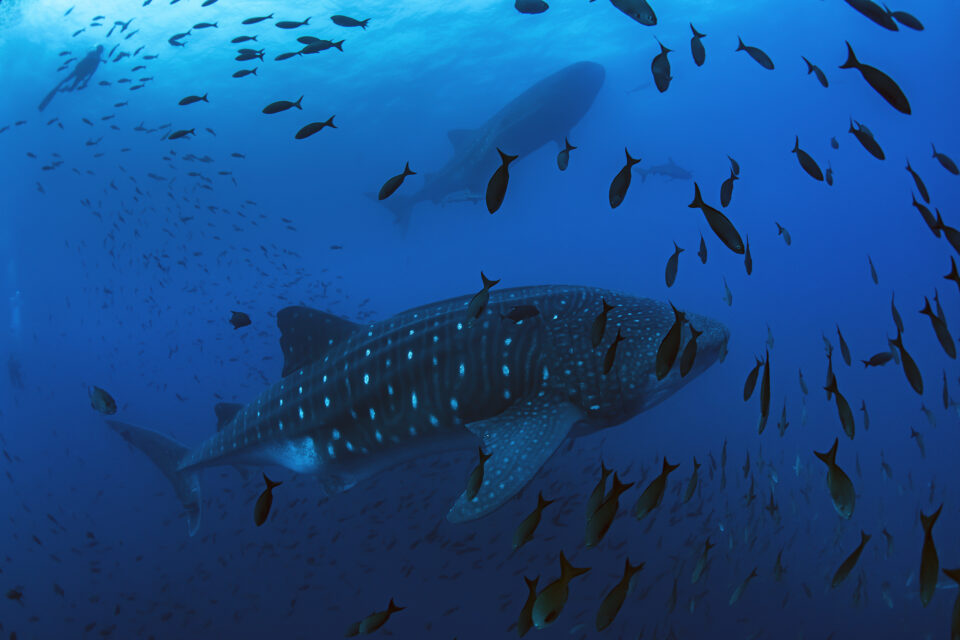
Ocean Protection Webinar 2023

Tagging a new constellation of whale sharks
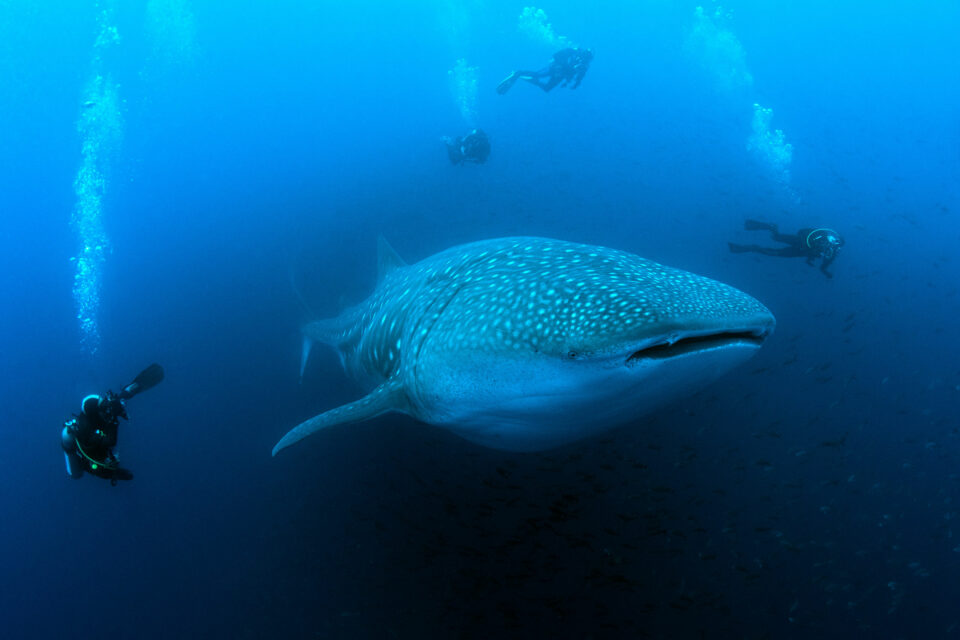
World Oceans Day 2022: Tagging Ocean Giants
How you can help
Please help us protect these majestic creatures by donating today or by adopting a whale shark.
